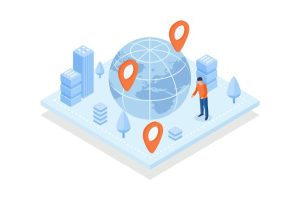The proliferation of remote work in recent years, accelerated by global events such as the COVID-19 pandemic, has transformed the traditional cybersecurity landscape. While remote work offers numerous benefits in terms of flexibility and productivity, it also presents unique challenges and vulnerabilities that organizations must address to maintain robust security posture. Understanding these challenges and implementing effective solutions is essential for safeguarding sensitive data and mitigating cyber threats in the age of remote work.
One of the primary challenges of remote work is the expanded attack surface it creates. With employees accessing corporate networks and sensitive data from various locations and devices, traditional perimeter-based security measures become less effective. Remote workers may connect to unsecured Wi-Fi networks, use personal devices for work purposes, or fall victim to phishing attacks, increasing the risk of data breaches and unauthorized access.
Moreover, the decentralization of work environments makes it more difficult for IT teams to monitor and enforce security policies consistently. Ensuring that remote workers adhere to cybersecurity best practices, such as using strong passwords, enabling multi-factor authentication, and keeping software up to date, requires proactive communication and employee training initiatives.
Another significant challenge is the heightened risk of insider threats in remote work settings. While the majority of remote employees are trustworthy individuals, the lack of physical oversight and the potential for unauthorized access to sensitive information increase the likelihood of insider incidents, whether intentional or accidental. Organizations must implement robust access controls, monitoring mechanisms, and user behavior analytics to detect and mitigate insider threats effectively.
Furthermore, remote work introduces complexities in data protection and compliance. As employees collaborate and share sensitive information across disparate locations and devices, ensuring compliance with data privacy regulations such as GDPR and CCPA becomes increasingly challenging. Organizations must implement encryption, data loss prevention (DLP), and secure collaboration tools to safeguard sensitive data and maintain regulatory compliance in remote work environments.
To address these challenges, organizations can adopt a multi-faceted approach to cybersecurity in the age of remote work. This approach includes:
- Implementing secure remote access solutions: Organizations should deploy virtual private networks (VPNs), remote desktop protocols (RDP), or zero-trust network access (ZTNA) solutions to provide secure and encrypted access to corporate resources for remote workers.
- Enhancing endpoint security: Deploying endpoint protection platforms (EPP), antivirus software, and endpoint detection and response (EDR) solutions can help detect and mitigate malware threats on remote devices. Additionally, implementing mobile device management (MDM) solutions enables organizations to enforce security policies and remotely wipe data from lost or stolen devices.
- Conducting regular security awareness training: Educating remote employees about cybersecurity risks, best practices, and how to identify and report suspicious activities is critical for strengthening the human firewall and reducing the likelihood of successful cyberattacks.
- Strengthening identity and access management (IAM): Implementing IAM solutions such as single sign-on (SSO), multi-factor authentication (MFA), and privileged access management (PAM) helps organizations manage and control user access to critical systems and data.
- Monitoring and incident response: Leveraging security information and event management (SIEM) solutions, threat intelligence feeds, and security orchestration, automation, and response (SOAR) platforms enables organizations to detect, investigate, and respond to security incidents in real-time.
In conclusion, cybersecurity in the age of remote work presents significant challenges, but with careful planning, implementation of appropriate security measures, and ongoing vigilance, organizations can effectively mitigate risks and ensure the security of their remote workforce and sensitive data. By adopting a comprehensive approach that combines technology, education, and proactive risk management strategies, organizations can navigate the complexities of remote work while maintaining robust cybersecurity defenses.













